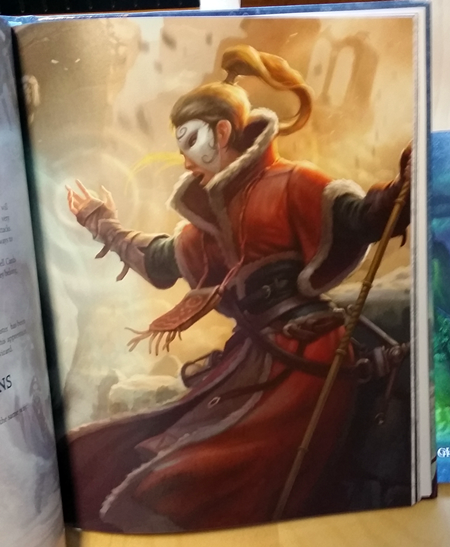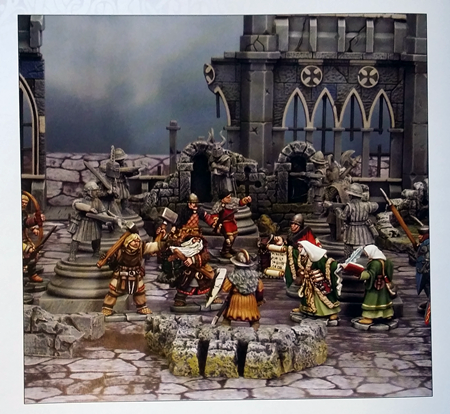I got Frostgrave (paid link) and its first, and currently only, supplement, Thaw of the Lich Lord (paid link) in the mail yesterday, and so far it’s everything I was hoping it would be.

What I dig about Frostgrave
Frostgrave is a fantasy skirmish wargame set in a city recently released from the grip of a magical winter — formerly Felstad, now known as Frostgrave — and its core conceits are right up my alley. Here they are, along with some of the many other things I like about it:
- You play a wizard, with a character sheet and everything, who leads your warband.
- The warbands are small: 1 wizard plus a maximum of 9 other figures, 1 of which can be an apprentice. That’s super-manageable if, like me, you don’t like painting or fussing with large armies.
- The play area is small, too, at 3′ on a side.[1] That’s an easy amount of space to find just about anywhere.
- You don’t need official miniatures (though they’re available if you like), so you can slap together a warband from whatever stuff you already have on hand. Sure, you can always do this, but Frostgrave goes out of its way to encourage this approach. This was the single selling point that pushed me over the line and made me order the book.
- The default objective is treasure, which is scattered around the map. The winner, unless a scenario says otherwise, is the player who gets the most treasure.
- And finally, it’s geared for campaign play: You can establish a base on the outskirts of Frostgrave, level up, learn new spells, etc.
There’s a roleplaying flavor to Frostgrave — hell, the whole concept of recruiting a bunch of mooks to go steal treasure from a monster-haunted city is straight out of old-school D&D. I roleplay a lot more than I wargame, so that aspect of Frostgrave appeals to me.
The backstory fits on half a page, and the rulebook is pleasantly short — about 130 pages, and those are 8×10 pages to boot. Joseph McCullough‘s writing is clear, warm, and inviting[2], and the layout is just as clean and useful.

The very first rule in the book, which addresses situations where no exact rule exists, really sets the tone:
In these cases, use your best judgement and try to come to a mutual agreement with your opponent. If you can’t agree, each player should roll a die and go with the interpretation of whichever player rolls highest. You can discuss the situation further after the game and decide how you will handle the situation next time.
I love the art style, too. All of the art is by the same artist, Dmitry Burmak.

And of course there are plenty of photos of miniatures, terrain, and scenes in Frostgrave.

Short, sweet, and casual-friendly
Everything from the hook, to the premise, to the simple-but-not-simplistic rules, to the production values, to the brevity of the book points towards me enjoying Frostgrave. I’ve been playing wargames since I was a kid, but I’m not hardcore — I’m a lot closer to the casual end of the spectrum.
Hell, my first purchase after the rulebook (once I realized all of my D&D miniatures, which I’d planned to use, were hopelessly buried in our storage unit) was a bunch of Pathfinder Pawns (paid link) to use in lieu of actual minis. Which, again, Frostgrave totally encourages.
I like shorter games with manageable armies, and without a lot of worrying about time-consuming details like whether your mini’s weapon matches her description. I also like an interesting premise, and Frostgrave (paid link) has that, too. I’m excited to finish reading it, punch out some pawns, pull together some terrain, and find an opponent.
[1] Of course you can play on a larger or smaller field of battle, and the book mentions this option. It mentions lots of options, all throughout; it’s a relaxed, conversational sort of rulebook. I dig that.
[2] Thats a weird trio of adjectives to describe wargame rules, right? But it fits!
